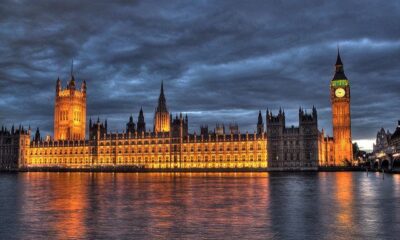

Economy
Rio+50: the long view
Rio+20 marks the 20th anniversary of the 1992 Earth Summit (United Nations Conference on Environment and Development, or UNCED) which was staged in the same city.
The event billed as 20 years of global work on sustainable development has, in fact, five decades of heritage from the 1962 book Silent Spring, the 1972 UN Conference on the Human Environment (the Stockholm Conference), the Club of Rome’s seminal book, The Limits to Growth, of the same year, through to the 1987 Brundtland report. Here, we look at key events that have led to Rio+20.
Rachel Carson, a marine biologist and conservationist who died in 1964, published Silent Spring in September 1962. It is widely credited with starting the modern environmental movement for its eloquent and simple thought. Its central thesis was that the increasing use of pesticides was harming animals, insect and birdlife, which had consequences for humans. A silent spring would be one where we heard no birdsong.
 A total of 113 countries attended the Stockholm Conference in 1972 to discuss the state of the global environment. Commonly recognised as the beginning of modern political and public awareness of global environmental issues, it coincided with the publication of two other works; one of which was the Club of Rome’s The Limits of Growth, which has sold 12m copies in more than 30 translations, making it the best-selling environmental book in world history.
A total of 113 countries attended the Stockholm Conference in 1972 to discuss the state of the global environment. Commonly recognised as the beginning of modern political and public awareness of global environmental issues, it coincided with the publication of two other works; one of which was the Club of Rome’s The Limits of Growth, which has sold 12m copies in more than 30 translations, making it the best-selling environmental book in world history.
The book explored the relationship between exponential economic growth and finite resources. The Club of Rome was established in 1968 as a global think tank on international political issues and it is telling that 40 years ago, its first major work was on the environmental limits and consequences of growth.
The other publication of 1972 was The Ecologist’s Blueprint for Survival , which argued for a radically restructured society in order to prevent what the authors referred to as “the breakdown of society and the irreversible disruption of the life-support systems on this planet”.
While seen by some as extreme at the time, advocating a return to smaller self-sustaining communities, much of its general thinking of environmental risks, if not their solutions, has become widely accepted in the last four decades.
The 1987 Brundtland commission’s report, more correctly known as Our Common Future, was written under the leadership of the former prime minister of Norway, Gro Harlem Brundtland, at the behest of the UN General Assembly. It explored sustainable development and global collaboration on the interrelationships between people, resources, environment and development.
Despite the many deep insights held within the report, it is perhaps most famous for defining sustainable development as “development that meets the needs of the present without compromising the ability of future generations to meet their own needs”.
It focused heavily on addressing the basic needs of the world’s poor and the limits of technology and society to protect the environment for future generations. The wider concept of balancing current needs and future needs remains one of the most challenging as we are far from achieving that goal at a personal, community, national or international level in many spheres.

Kyoto Protocol signatories in green. Spot anything?
Amongst resolutions on sustainable development the environment and forests, 1992’s Earth Summit is most famous for establishing both the Convention on Biodiversity and the Climate Change Convention that led to the 1997 Kyoto Protocol. This has the goal of stabilising carbon emissions, and remains ungratified by 172 governments and 108 heads of state attended the event to discuss toxic patterns of production, alternative sources of energy, mass transportation and the increasing pressures of water supplies.
In the meantime, we are far from achieving the Millennium Development Goals, which in May 2000, set out eight clear goals for all 193 UN states to be achieved by 2015.
- Eradicating extreme poverty and hunger
- Achieving universal primary education
- Promoting gender equality and empowering women
- Reducing child mortality rates
- Improving maternal health
- Combating HIV/AIDS, malaria, and other diseases
- Ensuring environmental sustainability
- Developing a global partnership for development
Rio+20 has three simple objectives.
- Securing renewed political commitment to sustainable development
- Assessing the progress and implementation gaps in meeting already agreed commitments
- Addressing new and emerging challenges
With the UN secretary-general, Ban Ki-moon, repeatedly warning of potential failure at the conference, our own prime minister and the president of the US failing to attend and a watered down pre-summit outcome document, we will reserve judgment on the event.
Many things have been achieved but far, far more remains to be done.
What is clear is that despite multiple global meetings, millions of hours of bureaucrats time and countless principles, resolutions and communiques and we are still far from a sustainable future. It seems that short-term economic and political/electoral calculations trump future generation needs every time. We passionately hope to be proved wrong.
Further reading:


 Environment10 months ago
Environment10 months agoAre Polymer Banknotes: an Eco-Friendly Trend or a Groundswell?

 Environment11 months ago
Environment11 months agoEco-Friendly Home Improvements: Top 7 Upgrades for 2025

 Features9 months ago
Features9 months agoEco-Friendly Cryptocurrencies: Sustainable Investment Choices

 Features10 months ago
Features10 months agoEco-Friendly Crypto Traders Must Find the Right Exchange






























